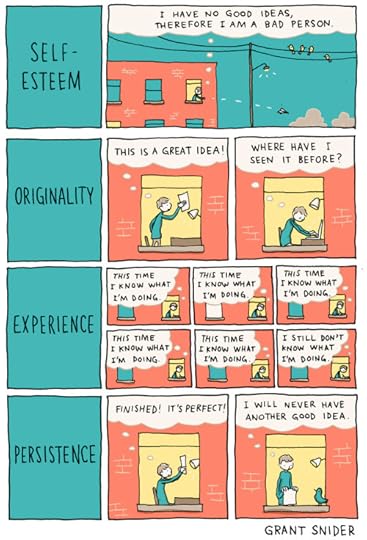Nigel Quinlan's Blog, page 30
June 29, 2016
October tale
by Neil Gaiman

A Meal fit for a King by Amelia Davis @ameliaddraws
“That feels good,” I said, and I stretched my neck to get out the last of the cramp.
It didn’t just feel good, it felt great, actually. I’d been squashed up inside that lamp for so long. You start to think that nobody’s ever going to rub it again.
“You’re a genie,” said the young lady with the polishing-cloth in her hand.
“I am. You’re a smart girl, toots. What gave me away?”
“The appearing in a puff of smoke,” she said. “And you look like a genie. You’ve got the turban and the pointy shoes.
I folded my arms and blinked. Now I was wearing blue jeans, grey sneakers, and a faded grey sweater: the male uniform of this time and this place. I raised a hand to my forehead, and I bowed deeply.
“I am the genie of the lamp,” I told her. “Rejoice, O fortunate one. I have it in my power to grant you three wishes. And don’t try the ‘I wish for more wishes’ thing – I won’t play and you’ll lose a wish. Right. Go for it.”
I folded my arms again.
“No,” she said. “I mean thanks and all that, but it’s fine. I’m good.”
“Honey,” I said. “Toots. Sweetie. Perhaps you misheard me. I’m a genie. And the three wishes? We’re talking anything you want. You ever dreamed of flying? I can give you wings. You want to be wealthy, richer than Croesus? You want power? Just say it. Three wishes. Whatever you want.”
“Like I said,” she said, “Thanks. I’m fine. Would you like something to drink? You must be parched after spending so much time in that lamp. Wine? Water? Tea?”
“Uh…” Actually, now she came to mention it, I was thirsty. “Do you have any mint tea?”
She made me some mint tea in a teapot that was almost a twin to the lamp in which I’d spent the greater part of the last thousand years.
“Thank you for the tea.”
“No problem.”
“But I don’t get it. Everyone I’ve ever met, they start asking for things. A fancy house. A harem of gorgeous women – not that you’d want that, of course…”
“I might,” she said. “You can’t just make assumptions about people. Oh, and don’t call me toots, or sweetie or any of those things. My name’s Hazel.”
“Ah!” I understood. “You want a beautiful woman then? My apologies. You have but to wish. ” I folded my arms.
“No,” she said. “I’m good. No wishes. How’s the tea?”
I told her that the mint tea was the finest I had ever tasted.
She asked me when I had started feeling a need to grant people’s wishes, and whether I felt a desperate need to please. She asked about my mother, and I told her that she could not judge me as she would judge mortals, for I was a djinn, powerful and wise, magical and mysterious.
She asked me if I liked hummus, and when I said that I did, she toasted a pita bread, and sliced it up, for me to dip into the hummus.
I dipped my bread slices into the hummus, and ate it with delight. The hummus gave me an idea.
“Just make a wish,” I said, helpfully, “and I could have a meal fit for a sultan brought in to you. Each dish would be finer than the one before, and all served upon golden plates. And you could keep the plates afterwards.”
“It’s good,” she said, with a smile. “Would you like to go for a walk?”
We walked together through the town. It felt good to stretch my legs after so many years in the lamp. We wound up in a public park, sitting on a bench by a lake. It was warm, but gusty, and the autumn leaves fell in flurries each time the wind blew.
I told Hazel about my youth as a djinn, of how we used to eavesdrop on the angels and how they would throw comets at us if they spied us listening. I told her of the bad days of the djinn-wars, and how King Suleiman had imprisoned us inside hollow objects: bottles, lamps, clay pots, that kind of thing.
She told me of her parents, who were both killed in the same plane crash, and who had left her the house. She told me of her job, illustrating children’s books, a job she had backed into, accidentally, at the point she realised she would never be a really competent medical illustrator, and of how happy she became whenever she was sent a new book to illustrate. She told me she taught life drawing to adults at the local community college one evening a week.
I saw no obvious flaw in her life, no hole that she could fill by wishing, save one.
“Your life is good,” I told her. “But you have no one to share it with. Wish, and I will bring you the perfect man. Or woman. A film star. A rich… person…”
“No need. I’m good,” she said.
We walked back to her house, past houses dressed for Hallowe'en.
“This is not right,” I told her. “People always want things.”
“Not me. I’ve got everything I need.”
“Then what do I do?”
She thought about it for a moment. Then she pointed at her front yard. “Can you rake the leaves?”
“Is that your wish?”
“Nope. Just something you could do while I’m getting our dinner ready.”
I raked the leaves into a heap by the hedge, to stop the wind from blowing it apart. After dinner, I washed up the dishes. I spent the night in Hazel’s spare bedroom.
It wasn’t that she didn’t want help. She let me help. I ran errands for her, picked up art supplies and groceries. On days she had been painting for a long time, she let me rub her neck and shoulders. I have good, firm hands.
Shortly before Thanksgiving I moved out of the spare bedroom, across the hall, into the main bedroom, and Hazel’s bed.
I watched her face this morning as she slept. I stared at the shapes her lips make when she sleeps. The creeping sunlight touched her face, and she opened her eyes and stared at me, and she smiled.
“You know what I never asked,” she said. “Is what about you? What would you wish for if I asked what your three wishes were?”
I thought for a moment. I put my arm around her, and she snuggled her head into my shoulder.
“It’s okay,” I told her. “I’m good.”
Thank you, @neil-gaiman, for such a fantastic project
June 28, 2016
centuriespast:
ALTDORFER, AlbrechtThe Battle of...
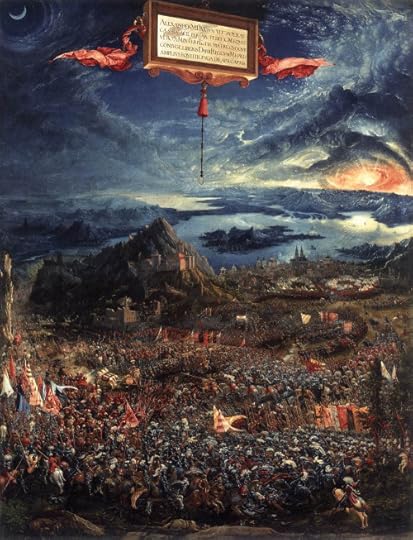
ALTDORFER, Albrecht
The Battle of Alexander
1529
Oil tempera on wood, 158 x 120 cm
Alte Pinakothek, Munich
June 26, 2016
Me, Murroe And LeFanu
I
remember being told by the teacher about the writer with the funny name
who lived in a big house down the road from the school. He wrote scary
stories and ghost stories and stories about duels and premature burials.
The very idea of them gave me delicious spooky chills. He used to dream
that his house was falling in on him, and he had this dream until the
day he died. ‘The house finally fell,’ his doctor said.
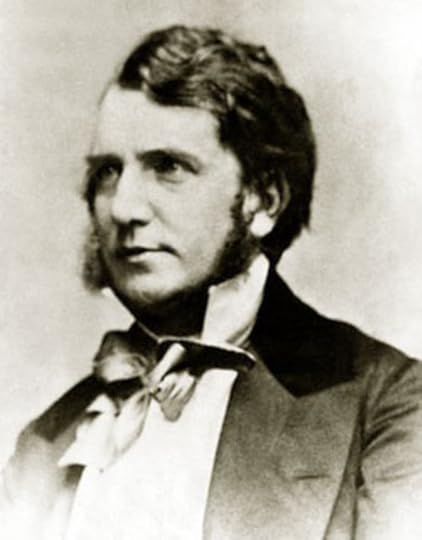
Was his dream a strange and eerie prophecy of his country flattened by falling house prices nearly 200 years later?
No.
Joseph
Sheridan LeFanu was born in 1814 and lived in Chapelizod in Dublin
until 1926. I lived in Chapelizod for a while, in a flat just under the M50. Ah, the sweet lullaby of late night cars rattling across the overpass. From 1856 until his death
in 1873 he lived in Merrion Square. I, er, used to eat my lunch in
Merrion Square a lot. I was working In Fred Hanna’s Bookshop on Nassau
Street. A brisk hike to get to the Square and back at lunch hour, but
worth it. His reclusive habits and night-owl work hours earned him the
nickname ‘The Invisible Prince.’ I don’t think my brisk hiking to the Square and back for my lunch hour earned me a nickname. That I know of.
From
1826 until he went to study law at Trinity, Joseph lived in Abington Co
Limerick, a quick brisk hike down the road from my home village of Murroe. I didn’t study
anything at Trinity, so the correspondences, such as they are, stop
there.
On Saturday 25th of June 2016, I went to Abington Church
for an event organised to celebrate Joseph Sheridan LeFanu’s connection
to the locality and to explore what influence, if any, his time here had
on his writing.

This
isn’t the same Church where his father, Thomas, served as rector, but a
later one, built in 1870. Nonetheless, the small, almost cosy space
with its wooden pews and brass plaques, was an atmospheric venue for the
talk by David McBurnie and accompanying visuals gleaned from various
archives by Grainne Keays.
The LeFanu’s time in Abington was not
an idyllic one. The locality was loudly beset by faction fighting, a
past-time of the locals designed to feed anyone’s stereotypes of the
Irish as drunk, belligerent brawlers. These were organised fights
between rival groups of men with big sticks. The causes were not
important, any old excuse would do, and civil authorities tended to turn
a blind eye to them as it was generally preferred that the Irish fought
amongst themselves. A particular source of conflict that must have
impinged on the lives of the LeFanus were the fights that broke out when
two funerals were due at the local graveyard on the same day. Since it
was believed that whoever was last buried must carry water for all the
other souls in purgatory until the next soul came along, the conflict to
get your corpse buried first could be brutal, and all within sight and
hearing of the poor LeFanus.
Read more about them here,
including quotes from a celebrated and engaging memoir by Joseph’s
brother, William. All the places mentioned are in my locality - I went
to secondary school in Newport.
www.doonbleisce.com/faction_fighting.htm
Then
the Tithe War broke out. Oh, lord, the Tithe War. The Tithe was a tax
paid by Catholics for the maintenance of the Protestant Church. Since
there could be thousands of Catholics and only a few hundred, or even a
few dozen, as in Abington, Protestants in any given area, it was
lucrative and bitterly unpopular. Clashes with armed Constabulary,
ambushes, beatings, murder and arson made life interesting for the
Protestant Anglo Irish Ascendancy. The aforementioned William and his
cousin were attacked while distributing notices of a reduction in the Tithe, and only escaped with their lives because one of their attackers
had some sort of crisis of conscience.
So: hidden terrors and
violent upheaval creeping out of the wild landscape to threaten genteel
and civilised folk whose apparent Ascendancy is suddenly very much in
decline.
Our attention was then drawn in particular to one of
LeFanu’s later works which directly refer to places near Abington, but
more of that shortly.
The event was adjourned to the Glebe House
where the LeFanus resided, and we were graciously allowed to look
around by the current residents and shown what used to be the schoolroom
where the boys’ master taught them fly-fishing instead of verbs and was
eventually fired. An exquisitely beautiful house in a gorgeous setting.

The entrance to Glenstal Castle. It’s an 18th century manor house built in imitation of a Norman castle, you know. Real Norman castles didn’t have speed bumps.
Then it was on to Glenstal, where Fr Brian Murphy gave us a
guided tour and explained the various connections between the
Barringtons and the LeFanus. William LeFanu married a Barrington, and
designed the bridge at Capercullen.

And then there was this:
‘About
midway up the romantic glen of Cappercullen, near the point where the
counties of Limerick, Clare, and Tipperary converge, upon the then
sequestered and forest-bound range of the Slieve-Felim hills, there
stood, in the reigns of the two earliest Georges, the picturesque and
massive remains of one of the finest of the Anglo-Irish castles of
Munster—perhaps of Ireland.’
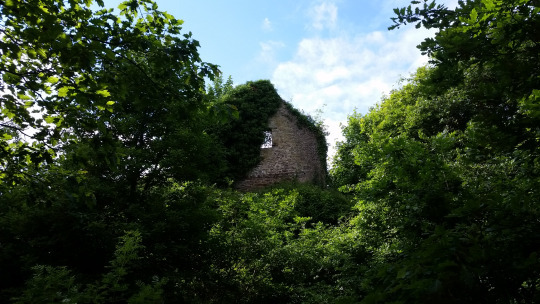
This is from LeFanu’s story ‘Ultor DeLacy: A Legend Of Capercullen.’
http://www.online-literature.com/lefanu/1782/
The
crumbling red sandstone bricks of ‘the picturesque and massive remains’
can be seen on the lip of the glen next to the bridge, all around the
cottage that stands there with its little garden.

They
call it the Peace Cottage now. My granny and granddad used to live
there. For me and my brothers and sisters and cousins, it was a second
home.
‘It
crowned the precipitous edge of the wooded glen, itself half-buried
among the wild forest that covered that long and solitary range. There
was no human habitation within a circle of many miles, except the
half-dozen hovels and the small thatched chapel composing the little
village of Murroa, which lay at the foot of the glen among the
straggling skirts of the noble forest.’
That gable
wall on ‘the precipitous edge of the wooded glen’ was once the back wall
of granny and granddad’s henhouse where we went looking for eggs and to
pet the dog and admire the little chicks when they hatched.

I have
to say it took my breath away, more than a little, to have these two
apparently separate strands of my childhood intersect so close to home. I
soaked in the ghostly gothic styling of not just LeFanu but Poe and
James and Dickens and Collins and Bierce and Maupassant. I ran wild
around Capercullen and Glenstal, or sheltered from the rain in the
warmth and comfort of granny and granddad’s house. These were formative
parts of my life I’d never directly connected before.
If you have
a taste for Poe and Collins and Bierce and the rest and haven’t tried
LeFanu, I would urge you to give him a go. His stories are expertly
crafted chillers much admired and very influential. His vampire story,
Carmilla, predated Stoker’s Dracula, but is also notable for its lesbian
undertones and the fact that the titular vampire’s emotional leeching
is no less terrifying than her bloodsucking.
After some tea and
too many delicious scones, jam and cream, I said goodbye and thank you
to all involved in organising this lovely day and wandered back down to
Capercullen to revisit my old haunts. It is quite possibly one of the
most beautiful places in the planet and I can’t believe I was so blessed
as to get to spend large chunks of my childhood there.

The road to my grandparent’s house. There were lots of long-cuts and short-cuts, and no big bad wolves to speak of.
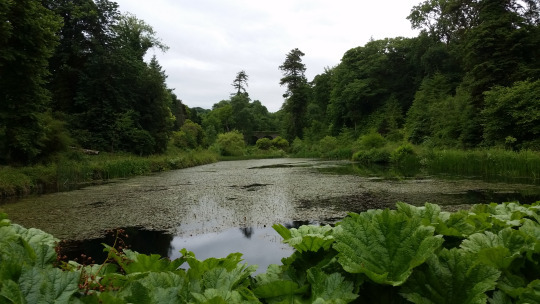
The lake, with William LeFanu’s bridge in the distance.

Down into the glen itself.

This is the Mass Rock, the fashionable spot for defying religious persecution during the time of the Penal Laws.

It’s
even cosier on this side! A perfect atmosphere of dank gloom and
claustrophobic isolation! We played here for hours! We were a weird
bunch of kids!

This
is part of Glenstal Castle. I used to wander in and out of this place
as if I owned it and somehow never got arrested once.

I met a fox! That’s ‘The Tiny Red Dot’ to you. I’m pretty sure granddad would have shot him, too, only not with a phone.
Thanks again to the organisers and contributors for this lovely day.
The works of Joseph Sheridan LeFanu can be found, eg, here (recommended: Green Tea, Carmilla and The House By The Graveyard):
http://www.online-literature.com/lefanu/
and Seventy Years Of Irish Life by his brother Wiilliam can be found here:
https://archive.org/details/seventyyearsofir00lefauoft
And to round it all off, the trailer for the magnificently melodramatic adaptation of Uncle Silas with Peter O’Toole:
June 22, 2016
Bad Machinery 6 now available for pre-order!
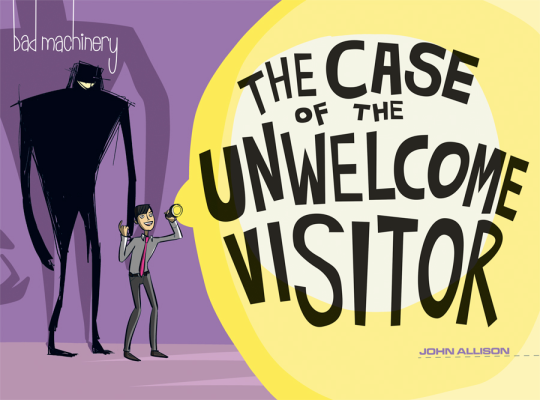
If you want to pre-order Bad Machinery 6: The Case Of The Unwelcome Visitor (featuring, as ever, a heap of new material) from your local comic shop, the Diamond Previews code is JUL161781 - otherwise, it’ll be available though all the normal channels in September.
June 13, 2016
warrenellis:
A Roll Cloud Over Uruguay via NASA...
coolthingoftheday:
After six years, 4,200 hours of shooting,...
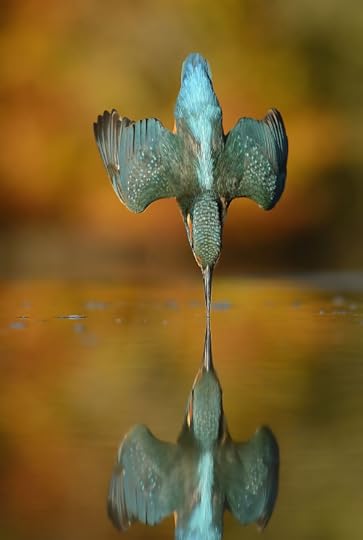
After six years, 4,200 hours of shooting, and 720,000 pictures, wildlife photographer Alan McFadyen finally managed to take a perfect shot of a kingfisher diving into the water with no splash.
(Source)
June 10, 2016
Note to self: don’t go walking through the willows when it’s...
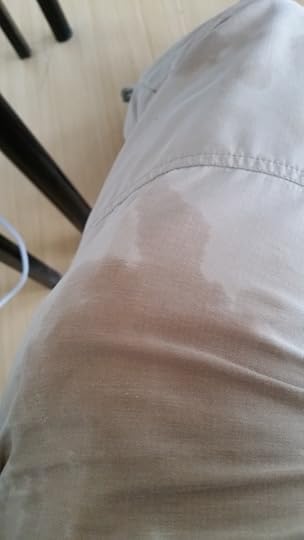
Note to self: don’t go walking through the willows when it’s been raining.
June 9, 2016
michaelcanning:
The Respectful Distance
2012 - 2016
Oil and wax...
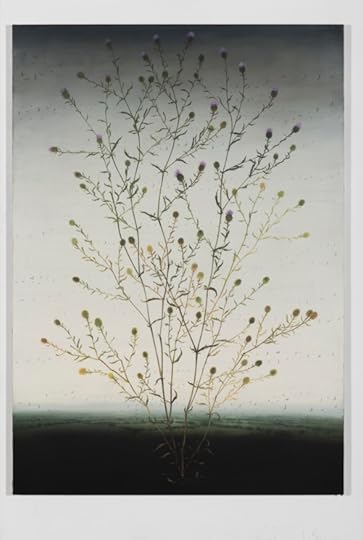
The Respectful Distance
2012 - 2016
Oil and wax on wood panel
100 X 70 cm
Michael Canning - The Respectful Distance - Oliver Sears Gallery, Dublin - until June 16th
June 8, 2016
did-you-kno:
When depression-era farmwomen had
to start using...
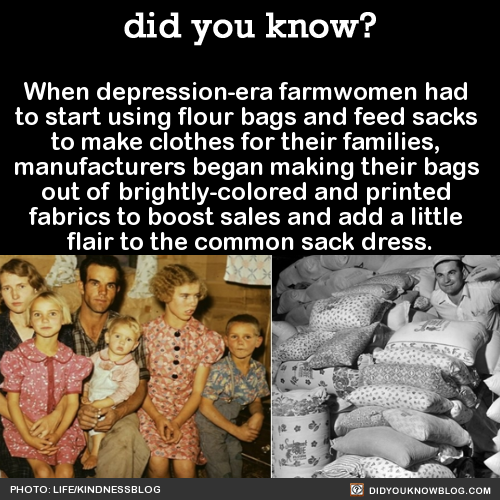
When depression-era farmwomen had
to start using flour bags and feed sacks
to make clothes for their families,
manufacturers began making their bags
out of brightly-colored and printed
fabrics to boost sales and add a little
flair to the common sack dress.

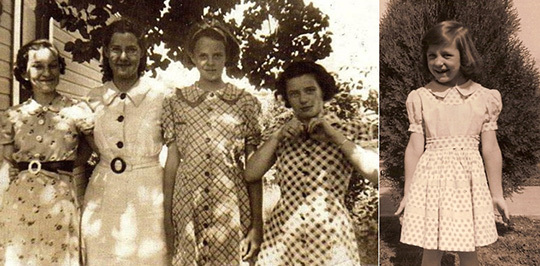

Once the trend caught on to the point that manufacturers were confident it would stick, they started making fabrics in an even wider variety of patterns and colors:




They even gave instructions on how to remove the ink, if you didn’t like the pattern:

Photos and info via: Kindness Blog, My Old Kentucky Tales,



